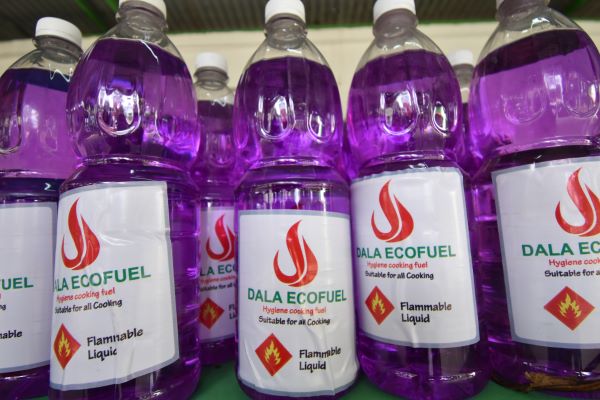By Zablon Oyugi
The cost of fuel in Kenya has reached a historic high, crossing the 200 Kenyan shilling ($1.36) mark for the first time following the recent price review that increased pump charges by up to Ksh21.32 per litre.
In fact, Kenya now has the 12th costliest fuel in Africa only trailing the Central African Republic (CAR), Malawi, Zimbabwe, Sierra Leone, and seven other countries in terms of the most expensive fuel.
Latest figures shows that a litre of diesel in the country jumped by Ksh21.32 to Ksh200.99 ($1.37) in Nairobi and that of super petrol rose by Ksh16.96 to Ksh211.64 ($1.4) while kerosene which many households especially urban dwellers use for cooking sells at Ksh202.61 ($1.38).
The fuel prices charged in Nairobi are almost identical with the cost of the commodities in the lakeside city of Kisumu.
As a result, entrepreneurs and innovators in the household cooking energy sector are taking advantage to not only manufacture and sell alternative and cheaper fuel for low-income dwellers but also producing safe and healthy source of cooking energy that has no effect to the people and environment.
One such innovator is Mr. Richard Arwa, a Kisumu City-based high school science teacher cum entrepreneur who is manufacturing bioethanol, a safe cooking energy from water hyacinth and molasses in Kisumu’s low-income Ogango area.
He has since named his budding enterprise Dala Ecofuel meaning home environment friendly cooking energy.

How the idea came about
According to Lillian Pedha, Dala Ecofuel sales manager the eco-fuel idea came from a high school science congress competition in which Arwa participated and where his students performed well in a project where they could produce some source of fuel from some local plants.
It is from this project the science guru picked the idea and would develop it to now an enterprise which is now providing solution to the majority of households pushed to the brink by the high cost of kerosene used by many low-income dwellers to prepare their foods.
“Many of the science congress projects are potential solution providers to some of the serious challenges facing many people in the society but in most cases they are forgotten at the competition level with no one to develop on them,” said Lillian.
“With this innovation, we have not only demonstrated how important these projects are but also indicate the importance of locally available materials in providing needful and affordable products for slum areas such as Ogango village,” she added.
How bioethanol fuel is made
Being careful to reveal detailed process of their venture regarding it as their business secret, Lillian says that the main raw materials for this safe source of cooking energy are water hyacinth and molasses.
From time to time they hire a team of casual workers who row inside Lake Victoria using boats to the very places where the invasive lake weed is thriving.
“They harvest the most succulent ones and bring it to our manufacturing site where it is weighed to process their payments,” she said.
Once this is done removal of the plant extract begins using a locally fabricated presser machine which separates the extract from the fibres.
While the fibres can be used to process animal feeds, the extract is mixed with molasses for fermentation process resulting into a flammable purple liquid- bioethanol fuel which is then tapped, collected and filled in containers for market.
“We sell a litre of the bioethanol fuel at Ksh100. This amount of the gas can support any cooking activity for four hours,” said Lillian.
Safi-stove
The bioethanol fuel burns from a small locally modernised stove called Safi-stove with two-litre capacity.
The fuel is poured inside the stove through an opening which is then tightly closed only to be released during cooking by a handle operator.
“We make these stoves too so that we may provide a complete package of a cooking system to our customers at affordable price,” said the marketer.
She adds that the fuel has been a game changer bringing cherished cooking experiences among low-income households as it does not produce soot hence safe to the environment and people.
“Firewood has become so expensive to find in slum areas so as charcoal and kerosene which produce dirty soot that can cause diseases to users, majority being our mothers and girls who handle cooking activities,” said Lillian adding that the bioethanol fuel is clean and best alternative.








